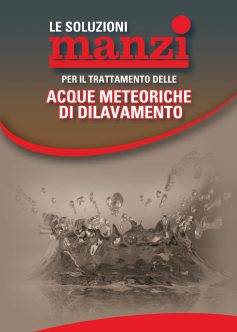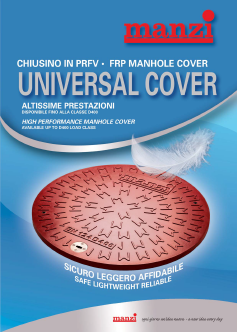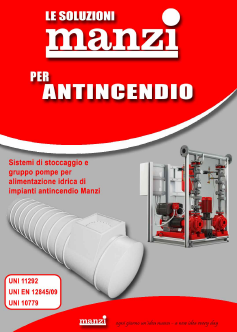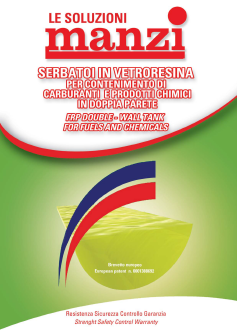The Advantages of Fibreglass.
Fibreglass (G.R.P., polyester resin reinforced with glass fibre) is a composite material that is generated by the union of various types of resins (orthophthalic, isophthalic, bisphenolic, vinylester) with various glass fibres (glass C, mat, strand mat, roving, para-tank).
Only two decades ago, it was unthinkable that systems in fibreglass could be manufactured for purification plants. Instead, today fibreglass has proven to have characteristics of chemical, and especially mechanical, resistance superior to any other of the usual materials or products.
This has prompted us to look ahead with vision and projections, researching to find new solutions for an increasingly competitive market.
To understand the special characteristics of fibreglass, it is necessary, for example, to observe the cavities present in our installations. The manufacturing of this material is conceived as a central alveolar structure joined to two external walls. It not only has a structural function, but one that can check for possible leaks detected by suitable controllers through probes inserted precisely in the cavities.
The advantages of using fibreglass are manifold:
CHEMICAL RESISTANCE
- Resistance to Acids and Bases
- Resistance to High Temperature Fluids
- Hydrocarbon Resistance
- Stability with more than 1200 Chemical Compounds
LIGHTNESS
With a specific weight of 1.20 g/cm 3 (= 11kg/m2/cm), for example, a tank of 20 cubic metres with surface development of 50 square metres weighs only 660 kg.
MECHANICAL STRENGTH
- In load tests (item partially buried with weight exerted directly on the hatch) it has withstood more than 44 tonnes of weight.
- Structural inspection carried out by the Department of Engineering of the University of Modena and Reggio Emilia has demonstrated that the Manzi manufactured articles in fibreglass are carriageable in the streets of the first category, the most restrictive as laid down by Italian legislation.
A tank made of fibreglass also possesses the following characteristics:
High ratio between mechanical strength and weight: Fibreglass possesses low relative density, as a result, at equal weight it is more durable than a steel component.
High mechanical inertia: One of the greatest characteristics that differentiate tanks in fibreglass from those made with traditional materials is its resistance to most acid and base chemical products, in addition to its resistance to solvents.
Resistance to weathering: Products in fibreglass are resistant to corrosion caused by stray currents that are normally found on metal products.
Low thermal and electrical conductivity: It has excellent heat insulating properties and in some cases it is not necessary to externally insulate the tank in order to maintain the internal temperature.
Life cycle: Continuous studies and tests carried out for more than thirty years with products in fibreglass have made it possible to ascertain that the ageing of this material is minimal.
Non-toxicity: The construction technology combined with the possible process of post-polymerisation in an oven and vaporisation make it possible to obtain tanks in conformity with the norms in force and standards for contact with food.
No maintenance: One of the advantages of fibreglass, which makes it one of the most important factors from the economic point of view, is that tanks in fibreglass require no maintenance. Unlike traditional materials, it is not necessary to carry out any periodical interior/exterior painting.
Lightness: Its reduced weight, accompanied by exceptional mechanical characteristics, makes handling of fibreglass tanks effortless, eliminating breakage during transport, unloading and installation.
The proper structuring of any type of tank in GRP is made up of three distinct types of layers that constitute a monolithic structure.
- Chemical-resistant layer
- Mechanical-resistant layer
- Outer protective layer
Resistance to corrosion in aggressive environments is one of the main reasons that the use of installations in GPR (fibreglass) is preferred. GRP is in fact resistant to a wide range of chemicals and temperatures and can be designed to also provide resistance to abrasion, atmospheric agents and fire.
The chemical resistance of fibreglass depends mainly on the matrix of glass/resin used. Other factors that may affect resistance are the structure of the liner, polymerisation, the manufacturing method and the technique of installation.
Corrosion (general, galvanising, aerobic, pitting, intergranular) occurs on metals but not on GRP.
The attached table presents a list of the most commonly used substances and indicates the resistance and temperature limits.
MATERIAL COMPARISON TABLE
CEMENT |
METAL |
G.R.P. |
PE |
PVC |
PP |
PS |
|
COSTS OF PURCHASE |
|||||||
EASE OF HANDLING |
|||||||
HYDROCARBON RESISTANCE |
|
||||||
MECHANICAL STRENGTH |
|||||||
RESISTANCE TO CORROSION |
|
||||||
DURABILITY |
|||||||
CARRIAGE ABILITY |
|||||||
LIGHTNESS |
|||||||
LOWER INSTALLATION TIMES AND COSTS |
|
||||||
EASE OF REPAIR |
|||||||
SEAL GUARANTEE |
|||||||
LARGE BLOCK |
|||||||
TOP AND BOTTOM INTERNAL FREE SPACE |



Copyright © 2016 Manzi S.r.l. · Via Cassia, Km 94.100 01027 Montefiascone (VT) – Italy P.IVA 01764460562

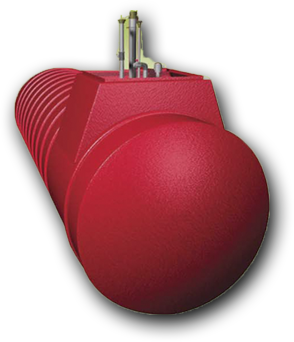 Petrol Tank
Petrol Tank Rainwater
Rainwater Domestic Purification
Domestic Purification Carwash Wastewater Treatments
Carwash Wastewater Treatments Fibre Glass Manhole Cover
Fibre Glass Manhole Cover Firefighting
Firefighting Chemical Resistance Table
Chemical Resistance Table

